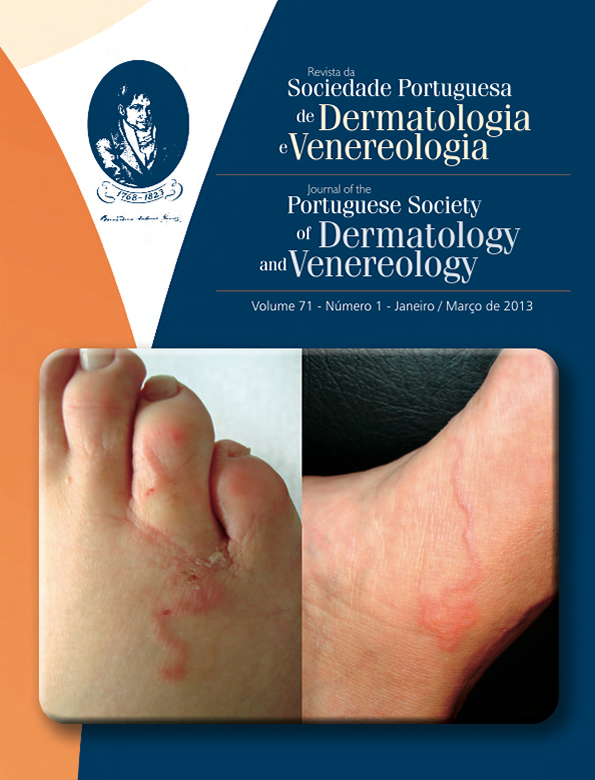GONOCOCCAL INFECTION IN A SEXUALLY TRANSMITTED INFECTION CLINIC. A RETROSPECTIVE STUDY OF FIVE YEARS: 2007-2011
Abstract
Introduction: In the late 70’s gonococcal infection decreased in most Western European Countries. In the 90’s there has been an important increase in the incidence of the disease, mostly in some higher risk groups.
Material and methods: This is a retrospective study based in the population attending the STD Clinic of Centro de Saúde da Lapa, between January 2007 and December 2011 (5 years). We assessed epidemiological data, the prevalence of Neisseria gonorrhoeae infection and associated sociodemographic factors.
Results: During the study period a total of 9068 patients attended the Clinic. Gonococcal infection was diagnosed in 386 (4.3%) patients (335 men and 51 women, median age of 30). In 2007 there were 66 cases of gonorrhoea, 57 cases in 2008, 106 cases in 2009, 67 cases in 2010 and 90 cases in 2011. The most frequent localization of infection was the urethra with 312 cases, followed by uterine cervix in 51 women and rectus in 30 men, with only 2 infections in the oropharynge. Co-infection was found with Chlamydia trachomatis in 80 cases and HIV in 50 patients.
Conclusions: Gonococcal infections diagnosed in the STD Clinic of Centro de Saúde da Lapa have gradually increased in the last decade, with most cases diagnosed in 2009. N. gonorrhoeae infection is a current problem, far from being eradicated and with new challenges regarding treatment.
KEYWORDS – Neisseria gonorrhoeae; Sexually transmitted diseases.
Downloads
All articles in this journal are Open Access under the Creative Commons Attribution-NonCommercial 4.0 International License (CC BY-NC 4.0).








